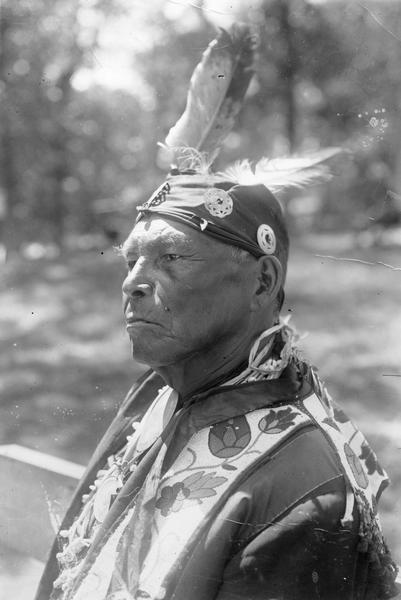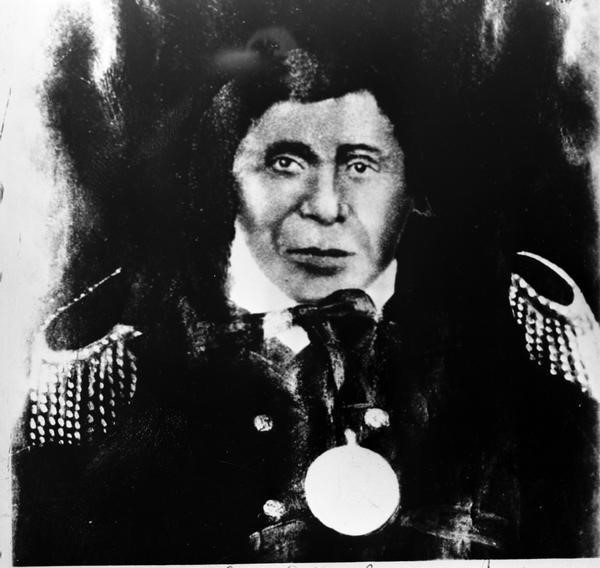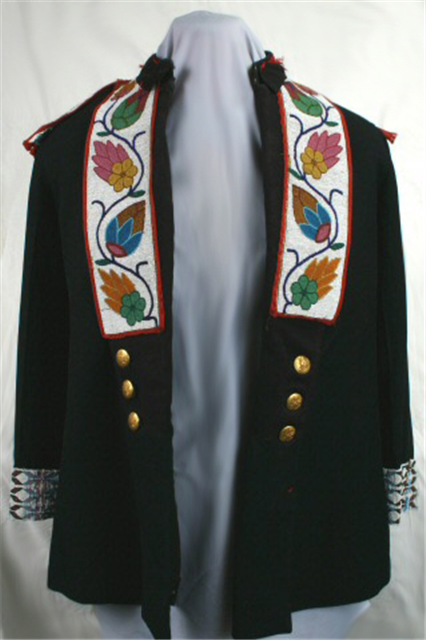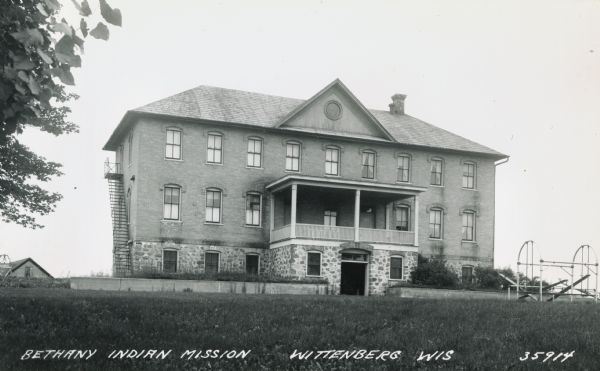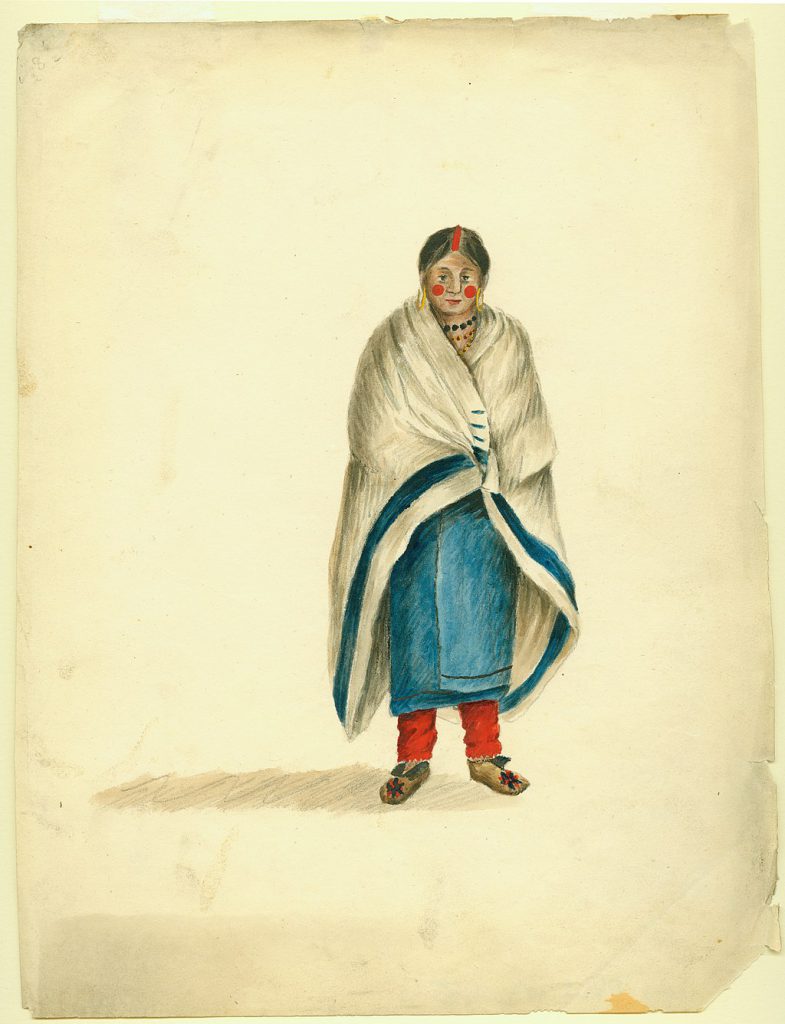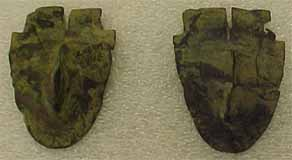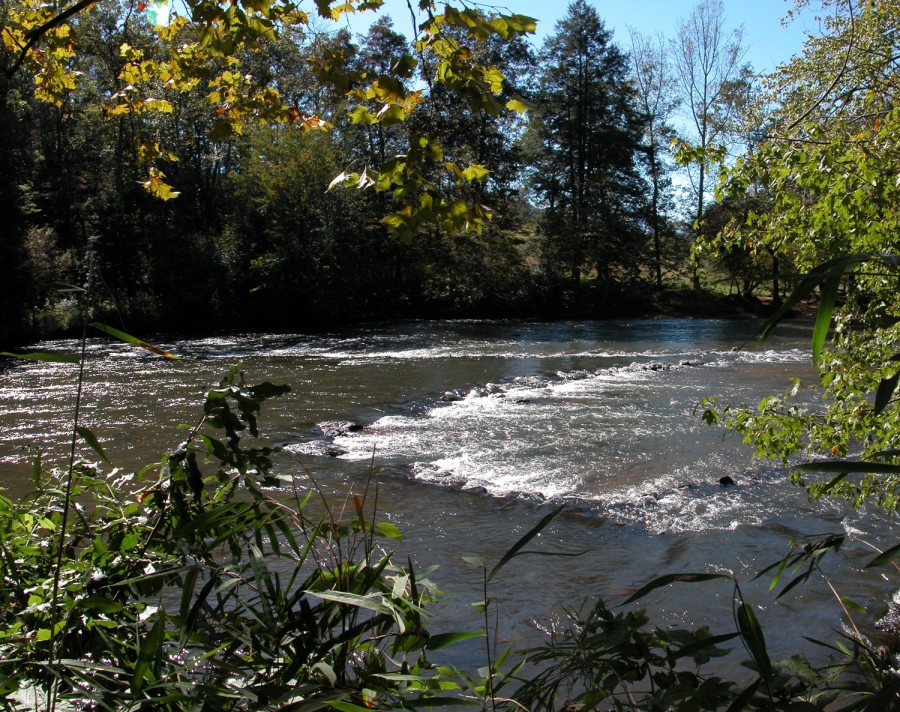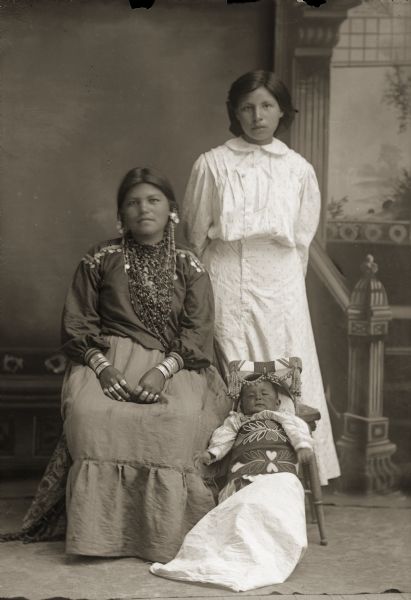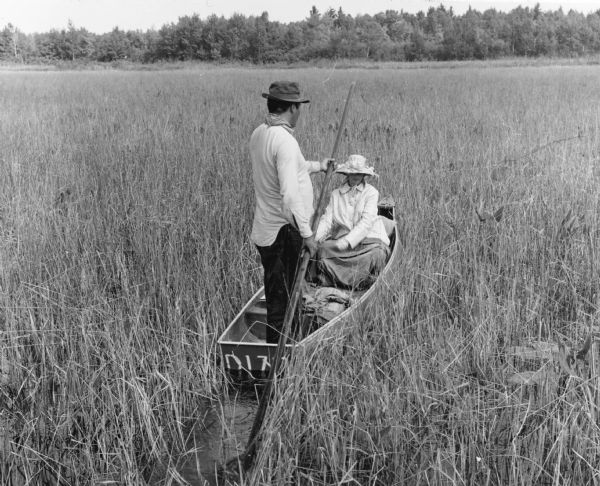Influential Leaders
Chief Simon Onanguisse Kahquados was the last hereditary descendant in a long line of Potawatomi chiefs, his family being one of the oldest known Potawatomi inhabitants of Wisconsin. An engaging speaker, Kahquados often served as an interpreter and provided a wealth of information to the Wisconsin Historical Society regarding traditional Potawatomi culture and history.
Kechewaishke (1759 – 1855), also known as Chief Buffalo, Peezhickee, and Le Boeuf, led the Lake Superior Ojibwe people of La Pointe, the location of Madeline Island today. Kechewaishke was instrumental to signing treaty agreements between the Wisconsin Ojibwe people and the United States, beginning with the treaty of 1825 and ending with the treaty of 1854.
OBJECT HISTORY: Potawatomi Beaded ‘Soldier Coat’
An elder spokesman for the Potawatomi Indians, Chief Simon Onanguisse Kahquados made a number of trips to Washington, D.C. in the early twentieth century in an effort to regain land that his people had lost through treaties with the United States government in the 1800s. Kahquados wore this coat on his last trip to Washington.
Treaties and Missionaries
Missionaries and Land Rights: The Story of Erik Morstad and the Potawatomi
The following story about the Potawatomi and Reverend Erik Morstad is a relatively well-known one: a missionary acted as a heroic figure who gifted the Potawatomi land that had always been rightfully theirs. But what happens when we revisit this written account with a questioning eye and consider alternative interpretations based on the same information?
OBJECT HISTORY: Ojibwe Presentation Pipe
This Ojibwe presentation pipe consists of two pieces: a pipe bowl and a pipe stem. It was most likely for spiritual ceremonies. According to the Wisconsin Historical Society, the pipe bowl is carved from heavy stone, and has two common images to Native American art works: the Janus head, which is two heads facing back to back, and a small buffalo figure
The Fur Trade Era
Not long after the explorer Jean Nicolet first set foot in Wisconsin, French traders saw an opportunity to make money by sending beaver furs back to Europe for use in stylish coats and hats. Instead of hunting the beavers themselves, these traders acquired the furs from the native people of Wisconsin who had experience collecting the pelts. And instead of paying money for the furs, the French offered to trade items such as metal pots, guns, axes, glass beads – and blankets.
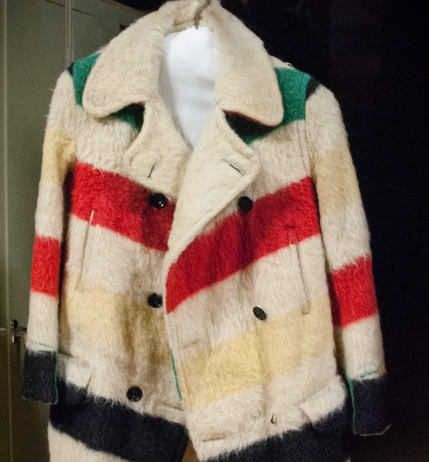
OBJECT HISTORY: A Hudson’s Bay Company Point Blanket Coat
This wool coat was constructed from a ‘point blanket’ made by the Hudson’s Bay Company, likely during the early 1920s. A Wausau businessman wore it at one of the town’s early Winter Frolics, an annual winter sports festival that attracted tourists from as far as Chicago.
The practice of converting Hudson’s Bay Company blankets into coats began years before the company began mass-manufacturing point blanket coats in the twentieth century. During the fur trade, Native Americans hunters traded beaver pelts for wool point blankets. Point blankets were waterproof and warm, and easy to sew into coats. Native American and French-Canadian trappers and traders adapted the coats first, and called the new garment a capote, which means “hood” or “overcoat” in French.
Aztalan
OBJECT HISTORY: Aztalan Maskettes
Found at the Aztalan archaeological site in southeastern Wisconsin, these small copper artifacts were most likely used as ornate jewelry.[1] Specifically, Mississipian people likely wore the mask-shaped copper designs as earrings. Although Native Americans seldom used metal, they sometimes used metals from the copper deposits found in the Great Lakes region to make tools and ornamental pieces like these 5.8 x 4.6 centimeter earrings.
Although much of the village of Aztalan has been gone for hundreds of years, this fishing weir still remains in the Crawfish River. These stones and boulders were left behind by the glaciers 10,000 years ago and were later used by the Mississippians to create their weirs.
Lifestyle
Native Americans used cradleboards in North America to protect, carry, and entertain their babies. Cradleboards allowed women to keep babies close to their side. Women carried cradleboards on their backs. They also could rest them against a tree. The cradleboard protected babies from danger and kept them happy.
When Lake Koshkonong was a Marsh
Although the area surrounding Lake Koshkonong is now home to the towns of Milton, Edgerton, and Fort Atkinson, the region looked very different before the middle of the nineteenth century. The lake itself did not exist until 1851 with the creation of the first Indianford Dam, which turned the marsh land into the lake of today. Before the lake, early European settler Lucien B. Caswell described the marshland as a flowing stream so densely packed with wild rice and celery that it was hard to even navigate in a canoe.
